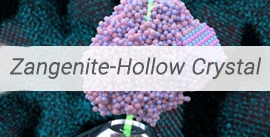 جدید
جدیدابداع روشی شگفتانگیز برای تولید هیدروژن از آب دریا تنها با استفاده از نور خورشید! Awesome New Method Can Pull Hydrogen Fuel From Seawater Using Only Sunshine
هیدروژن
ابداع روشی شگفتانگیز برای تولید هیدروژن از آب دریا تنها با استفاده از نور خورشید!
Awesome New Method Can Pull Hydrogen Fuel From Seawater Using Only Sunshine
دانشمندان موفق شدهاند تا با توسعهی نانو مادهی جدید، هیدروژن موجود در آب دریا را تنها با استفاده از نور خورشید جداسازی کنند.
——————————————————–
ترجمه از گروه ترجمه ایران مواد
حرفه ای ترین تیم ترجمه مهندسی مواد کشور
———————————————————
نانومادهی جدید توسعهداده شده میتواند هیدروژن موجود در آب دریا را با هزینهی بسیار کمتر و راندمان بالاتر از روشهای موجود دیگر آزاد کند؛ این امر موجب میشود که منبع قابل دسترس دیگری به منابع انرژی ما اضافه شود. یافتن راهی برای تولید هیدروژن مورد نیاز از مولکولهای آب، باعث کاهش چشمگیر میزان استفاده از سوختهای فسیلی میشود.
گروهی از دانشگاه مرکزی فلوریدا میگویند که روش جدید استخراج هیدروژن از آب دریا برای استفاده در خانهها بسیار مناسب است؛ در روش ارائه شده، از نور خورشید و آب دریا که هردو منابع قابل دسترس هستند، در کل فرآیند جداسازی هیدروژن استفاده میشود. یانگ یانگ، مدیر این تحقیقات، میگوید:
“ما دریچهی جدیدی برای جداسازی مولکول آب معمولی برخلاف سایر روشها که از آب مقطر آزمایشگاهی استفاده میکنند، باز کردیم؛ و این روش در آب دریا به خوبی عمل میکند.
با استفاده از هیدروژن در خودروهای هیدروژنی دیگر شاهد آلودگیهای زیست محیطی نخواهیم بود و خروجی اگزوز این خودروها تنها آب است که میتوان آن را مجدداً به هیدروژن و اکسیژن تبدیل کرد؛ این ویژگیها موجب شده است تا هیدروژن به منبع انرژی قابل دسترسی و پاک و دوستدار محیط زیست تبدیل شود.
اما یکی از موانع موجود بر مسیر استفادهی گسترده از هیدروژن، تولید هیدروژن از آب یا هر منبع دیگر با قیمت پایین است؛ از طرف دیگر روشهای موجود جداسازی هیدروژن، به انرژی زیادی نیاز دارند که تامین این انرژی به تولید کربن منجر میشود؛ درنتیجه بهصرفه بودن تولید هیدروژن به مانعی اساسی تبدیل شده است که گروههای مختلف از سراسر دنیا برای حل آن در تلاش هستند.
در گذشته نیز به تامین هیدروژن مورد نیاز از آب دریاها توجه شده بود، اما برای رسیدن به این هدف انرژی الکتریکی بسیار زیادی مورد نیاز بود؛ از سوی دیگر ناخالصیهای موجود در آب دریا همچون نمک، روند فرآیند جداسازی را با مشکلاتی همراه میکرد. در مطالعهی جدید انجام شده، یانگ و گروهش نانومادهی جدیدی توسعه دادهاند که همچون فوتوکاتالیستی عمل میکند که در هنگام تابش نور به سطح، واکنشهای شیمیایی رخ میدهد و در این پژوهش یکی از محصولات این واکنش گاز هیدروژن است.
این نانوماده با جذب طیف گستردهتر نور نسبت به سایر مواد، انرژی خورشیدی بیشتری را جذب میکند؛ همچنین نانومادهی ذکرشده برای استفاده در شرایط سخت موجود در آب دریا طراحی شده است. این مادهی ترکیبی برپایهی اکسید تیتانیم TiO2، رایجترین فوتوکاتالیست موجود، ساخته شده است؛ اما آن را با نانوذرات میکروسکوپی پراکنده شده با ترکیبی به نام دیسولفید مولیبدن پوشش دادهاند. این فرمول جادویی موجب شده است تا هیدروژن در فرآیندی با کارایی بیشتر و قیمتی مناسب تولید شود. محققان ادعا میکنند که فوتوکاتالیست ابداعی آنها دارای بازدهی دو برابر فوتوکاتالیستهای رایج میباشد.
از سوی دیگر استفادهی مستقیم از نور خورشید به تبدیل انرژی آن به الکتریسیته از طریق سلولهای خورشیدی به این معناست که دیگر نیازی به استفاده از باتری برای ذخیرهی انرژی الکتریکی نیست و به جای آن میتوان گاز هیدروژن را ذخیره و جابجا کرد.
نتایج حال از این تحقیق در مجلهی Energy & Environmental Science منتشر شده است.
منبع: www.sciencealert.com
مترجم : امیر اشجاری
Awesome New Method Can Pull Hydrogen Fuel From Seawater Using Only Sunshine
A newly developed nanomaterial can release hydrogen from seawater much more cheaply and efficiently than existing methods, potentially giving us another way of unlocking this most sustainable of energy sources.
Finding a way to produce hydrogen from water that isn’t prohibitively costly in price and energy could significantly reduce our reliance on fossil fuels.
And the team from the University of Central Florida say the new extraction method is particularly well suited to their home state, with an abundance of both sunshine and seawater – the two natural elements that make the whole process tick.
“We’ve opened a new window to splitting real water, not just purified water in a lab,” says senior researcher Yang Yang, who has been working on this type of technology for a decade. “This really works well in seawater.”
Put a hydrogen fuel cell in your car, and the only waste product is water, which can be turned back into hydrogen and oxygen – it’s a truly sustainable, clean, and environmentally friendly way of providing power.
The problem is producing hydrogen, from water or another source, in a cost-effective way that doesn’t cost more energy and create more carbon than it saves. It’s a puzzle that teams of scientists across the world are trying to solve.
And scientists have looked at getting hydrogen from seawater before – it can be done, but it uses a lot of electricity. The qualities of the water in the oceans, including the salt in it, make the process particularly tricky.
For this study, Yang and his team developed a new nanomaterial to act as a photocatalyst, spurring the chemical reaction that occurs when light hits a surface: in this case, producing hydrogen gas from water.
Crucially, the nanomaterial captures a broader spectrum of light than other materials, so it can use more of the Sun’s energy. It also is specially designed to stand up to the harsh conditions found in seawater.
The hybrid material is based on titanium dioxide, the most common photocatalyst, but it’s etched with microscopic nanocavities coated with a compound called molybdenum disulfide.
That’s the magic formula that makes the release of hydrogen much more efficient, at a reasonable cost. The researchers say it’s at least twice as efficient as current photocatalysts.
There’s still quite a way to go with this technology, which needs to be scaled up and commercialised if it’s going to give us a hydrogen-fuelled future, but the early tests run by the researchers show promising results.
As an added bonus, using sunlight directly rather than using electricity from solar panels means there’s no need to store electricity in batteries. The hydrogen gas can be stored and transported instead, which is easier to do.
“We can absorb much more solar energy from the light than the conventional material,” says Yang. “Eventually, if it is commercialised, it would be good for Florida’s economy.”
The research has been published in Energy & Environmental Science.









دیدگاه کاربران
ترجمه هاتون عالین و مطالبتون به روز.فقط مطالب سرامیکی در مقایسه با مطالب متالوژی بسیار کمتر است.ممنون